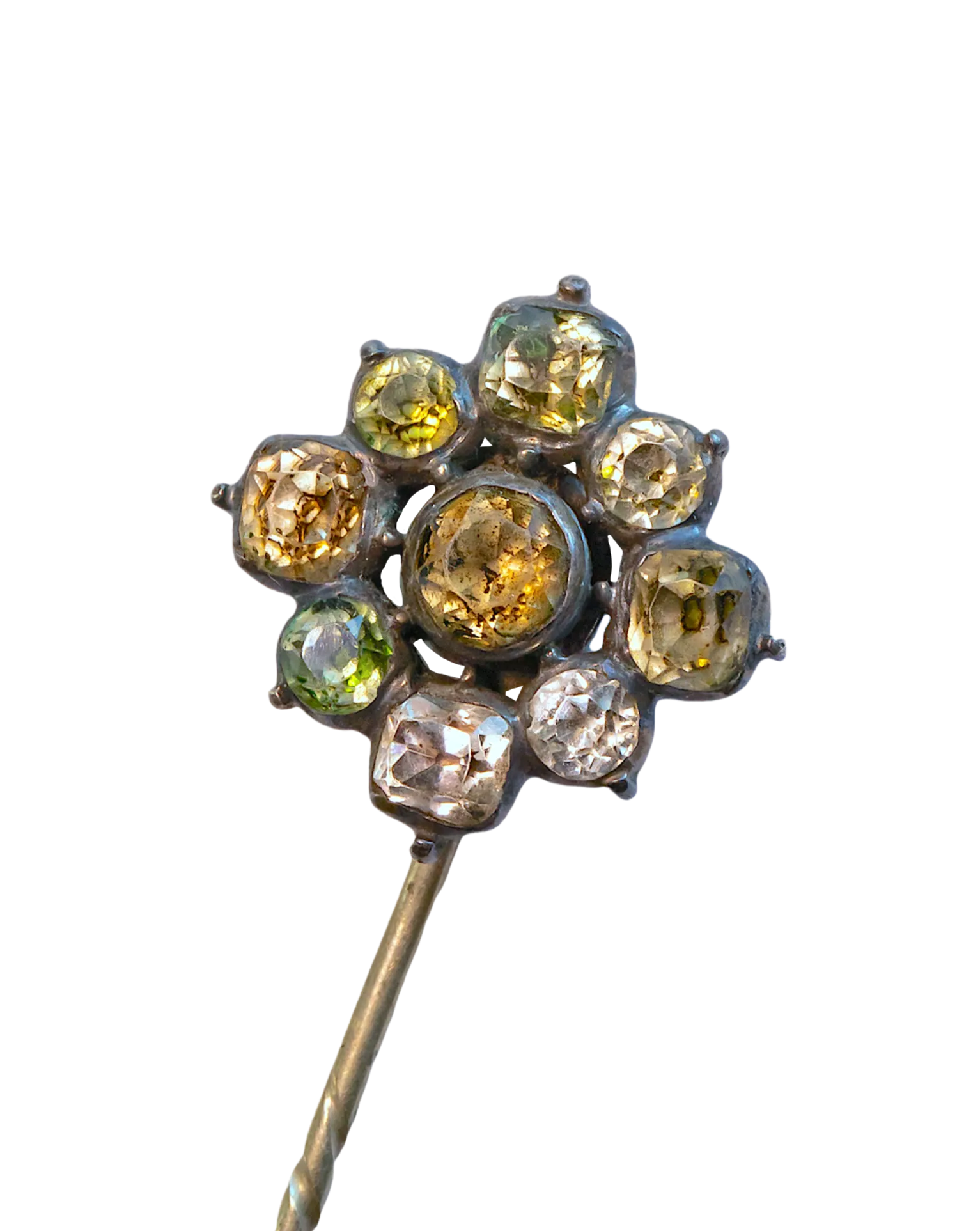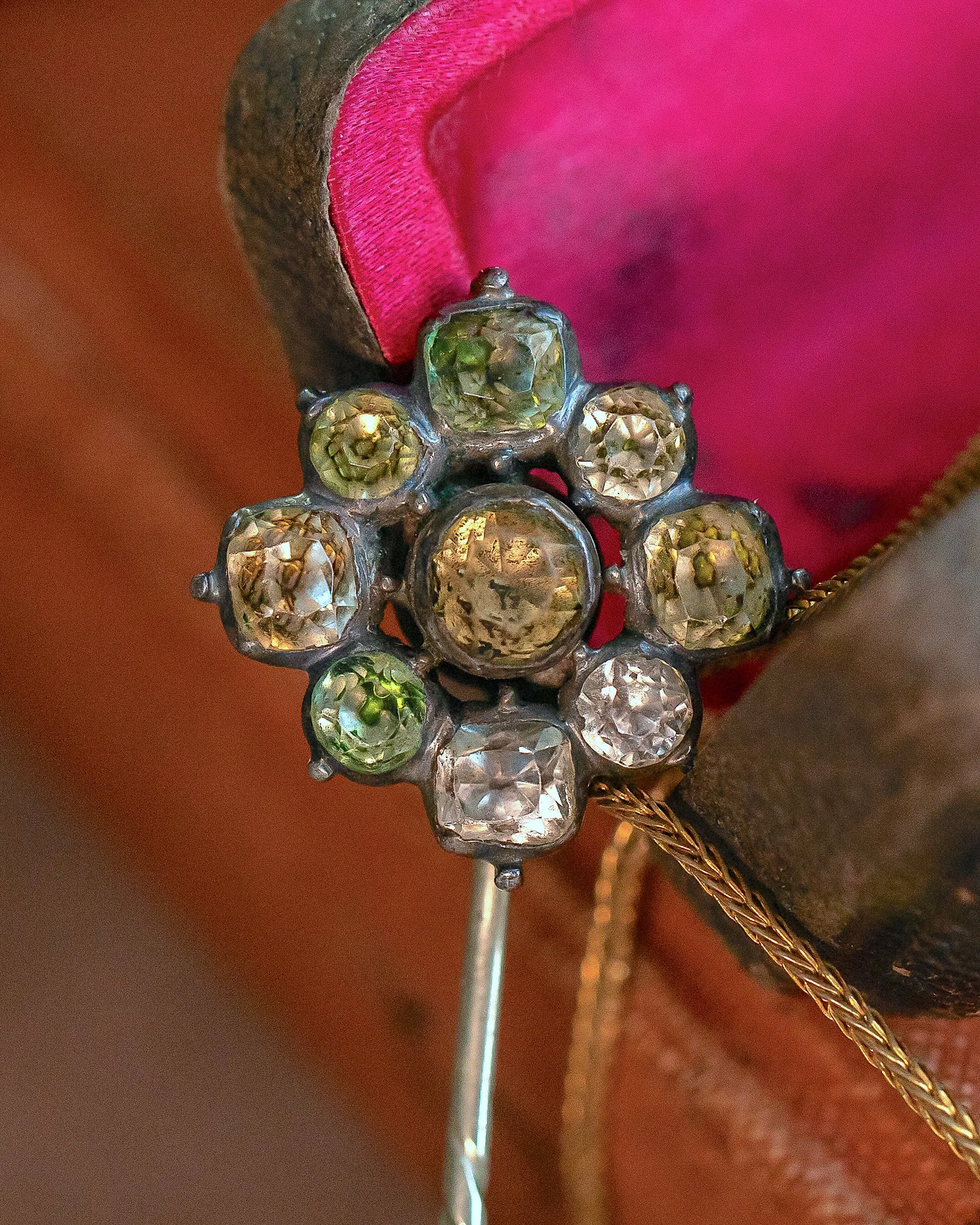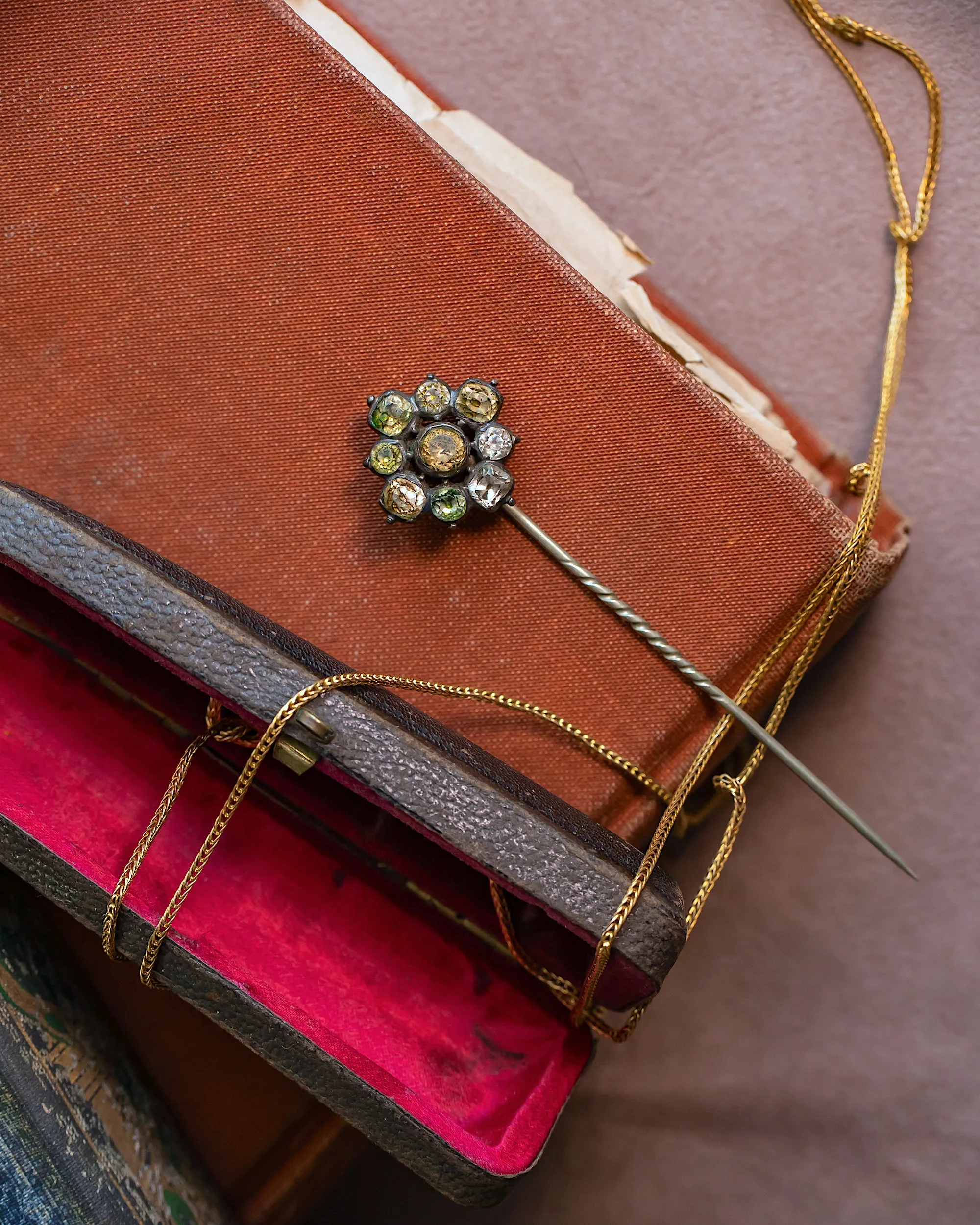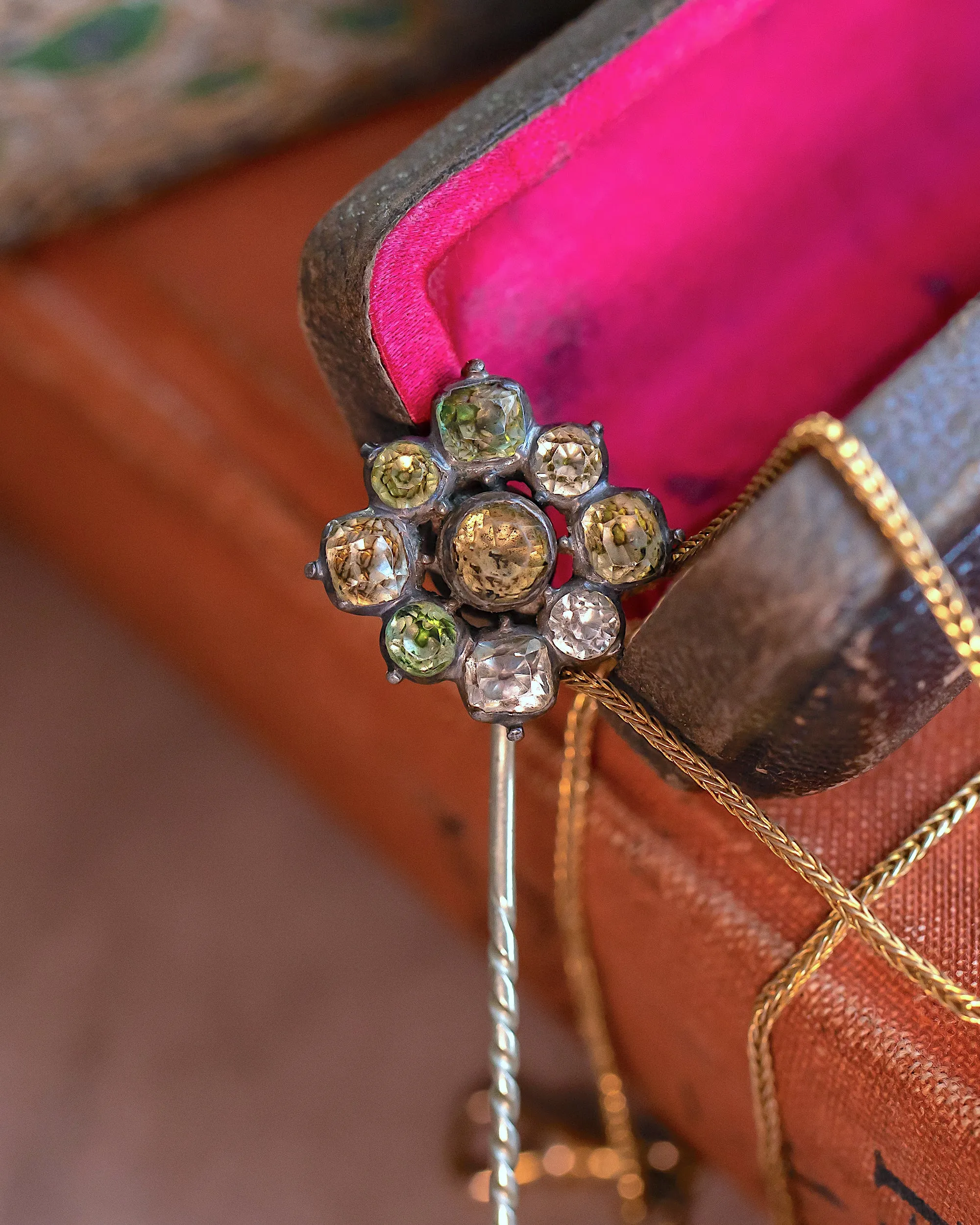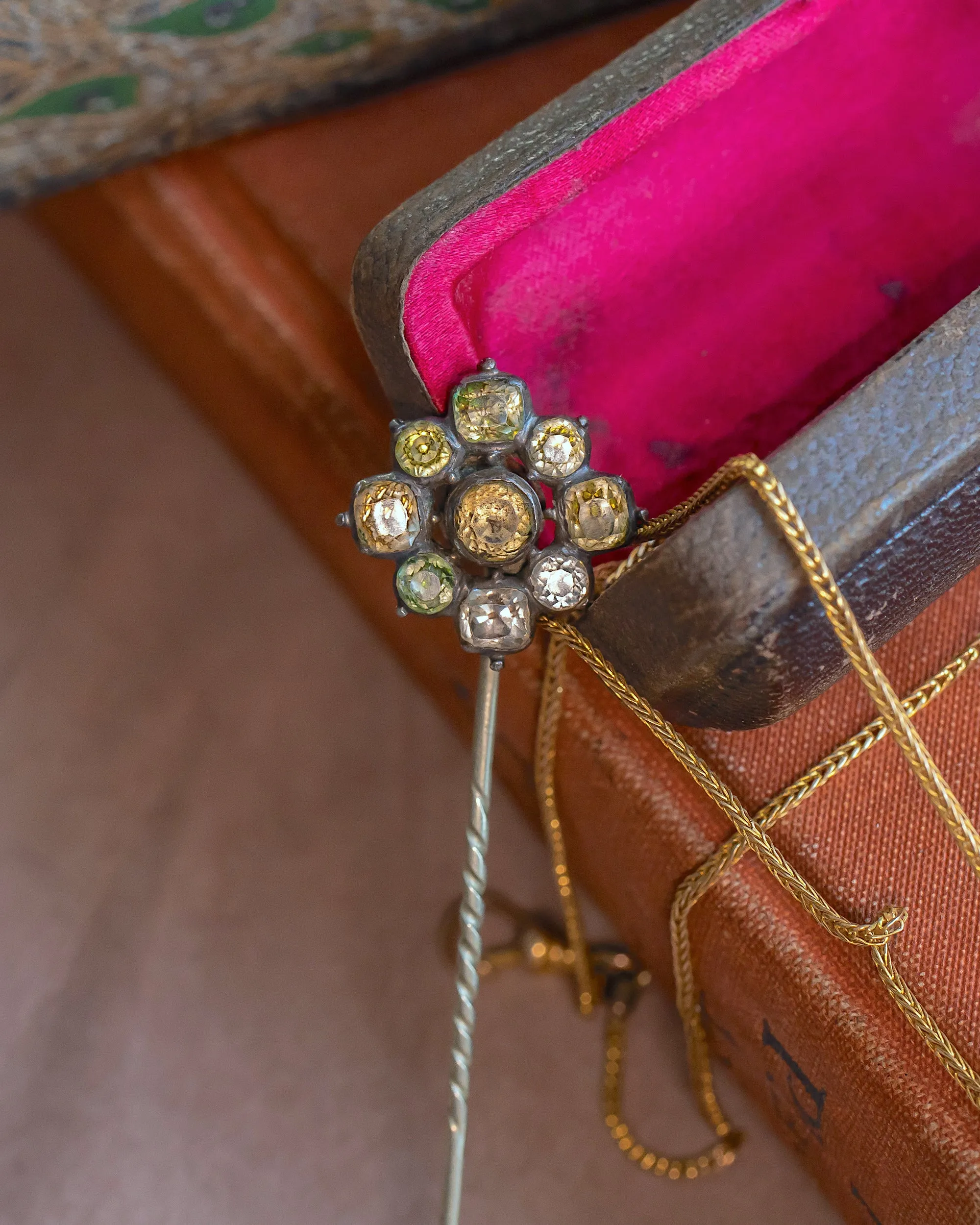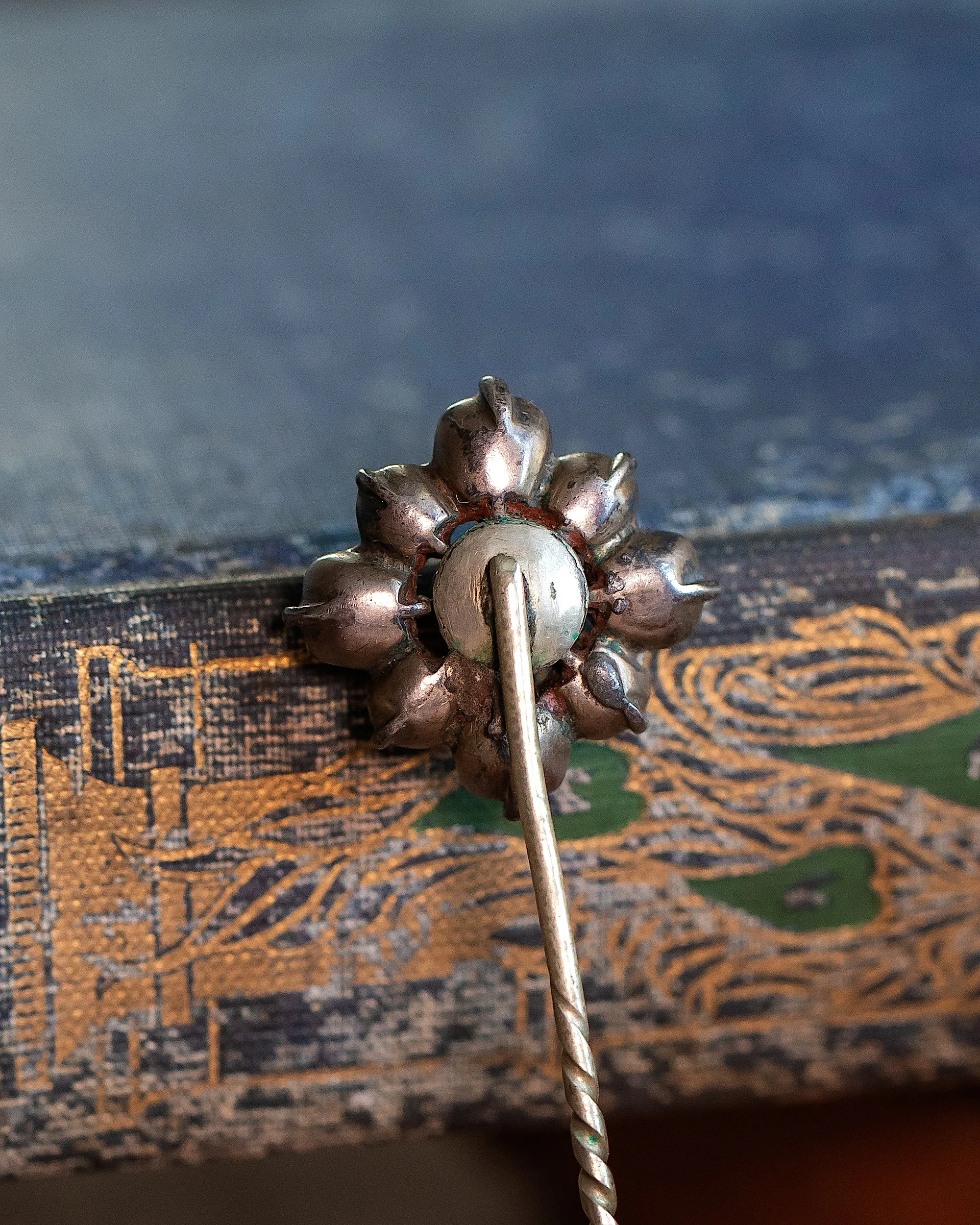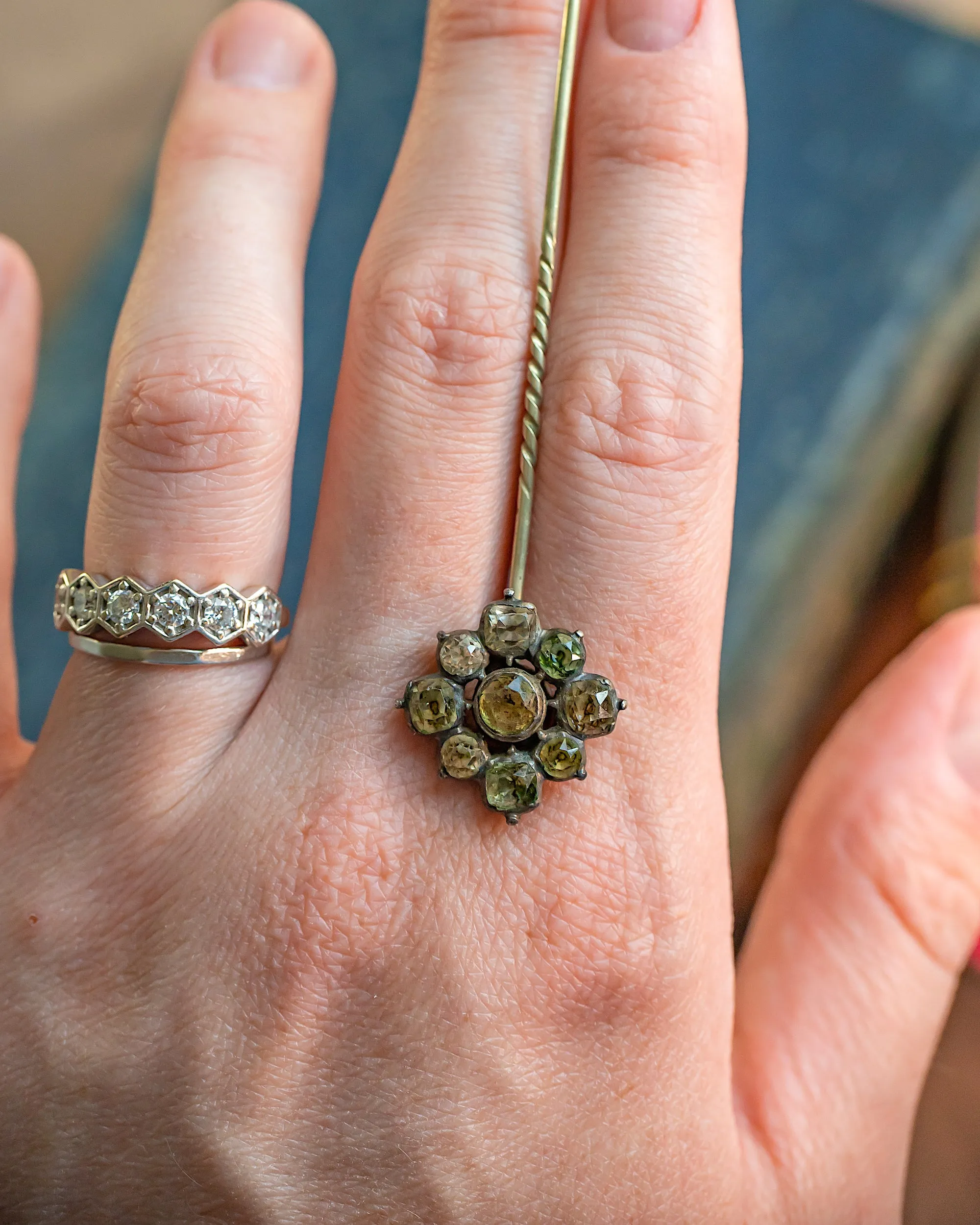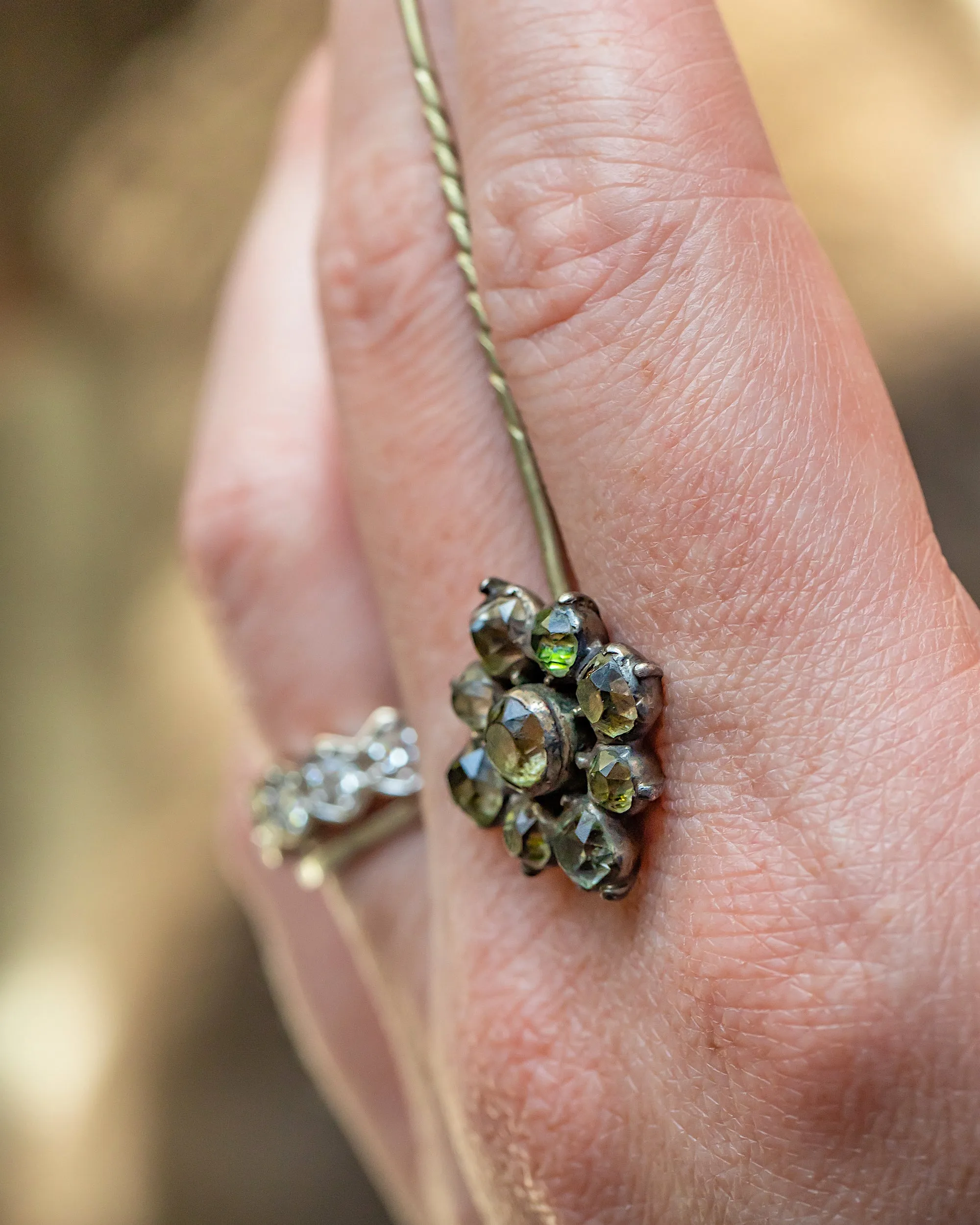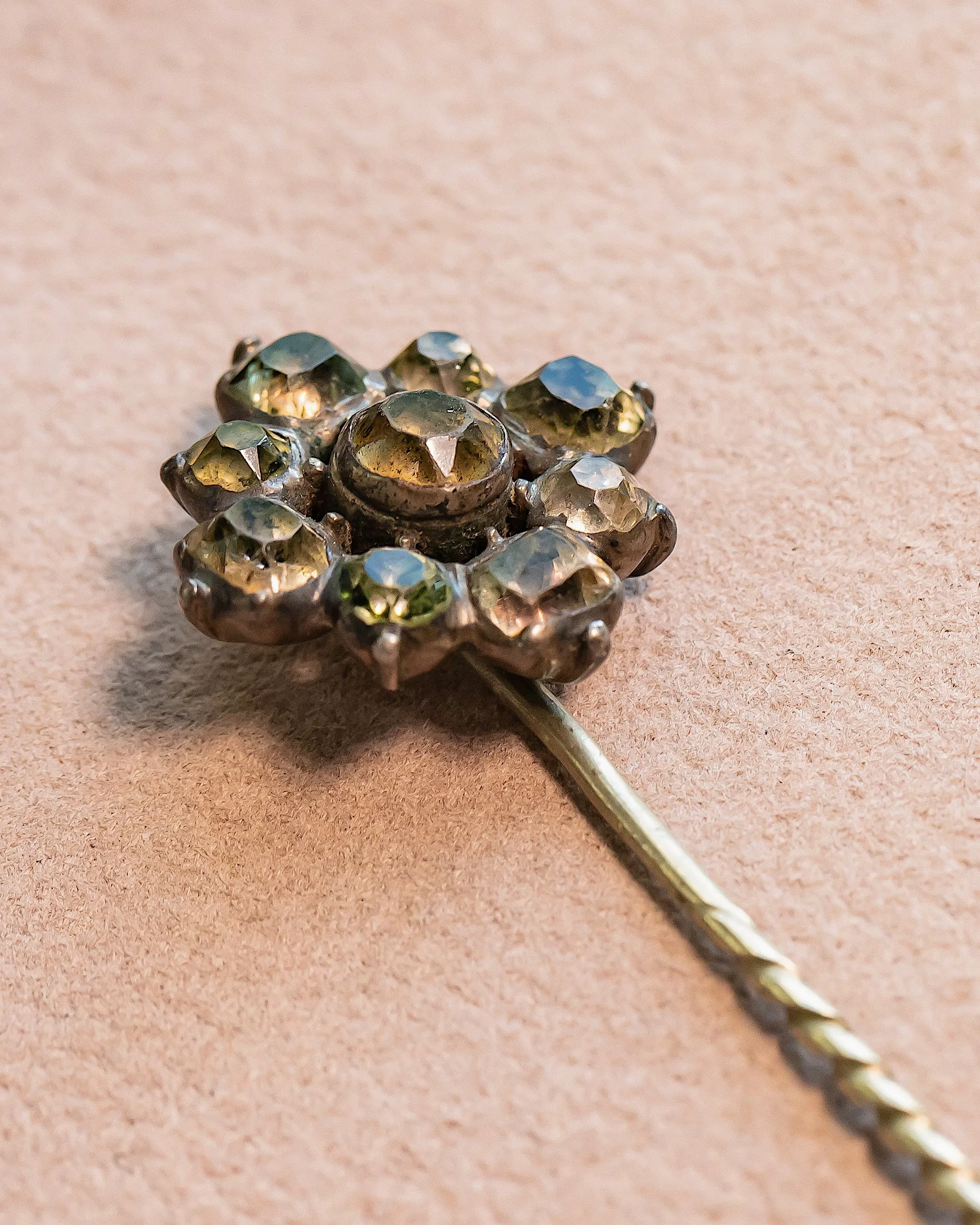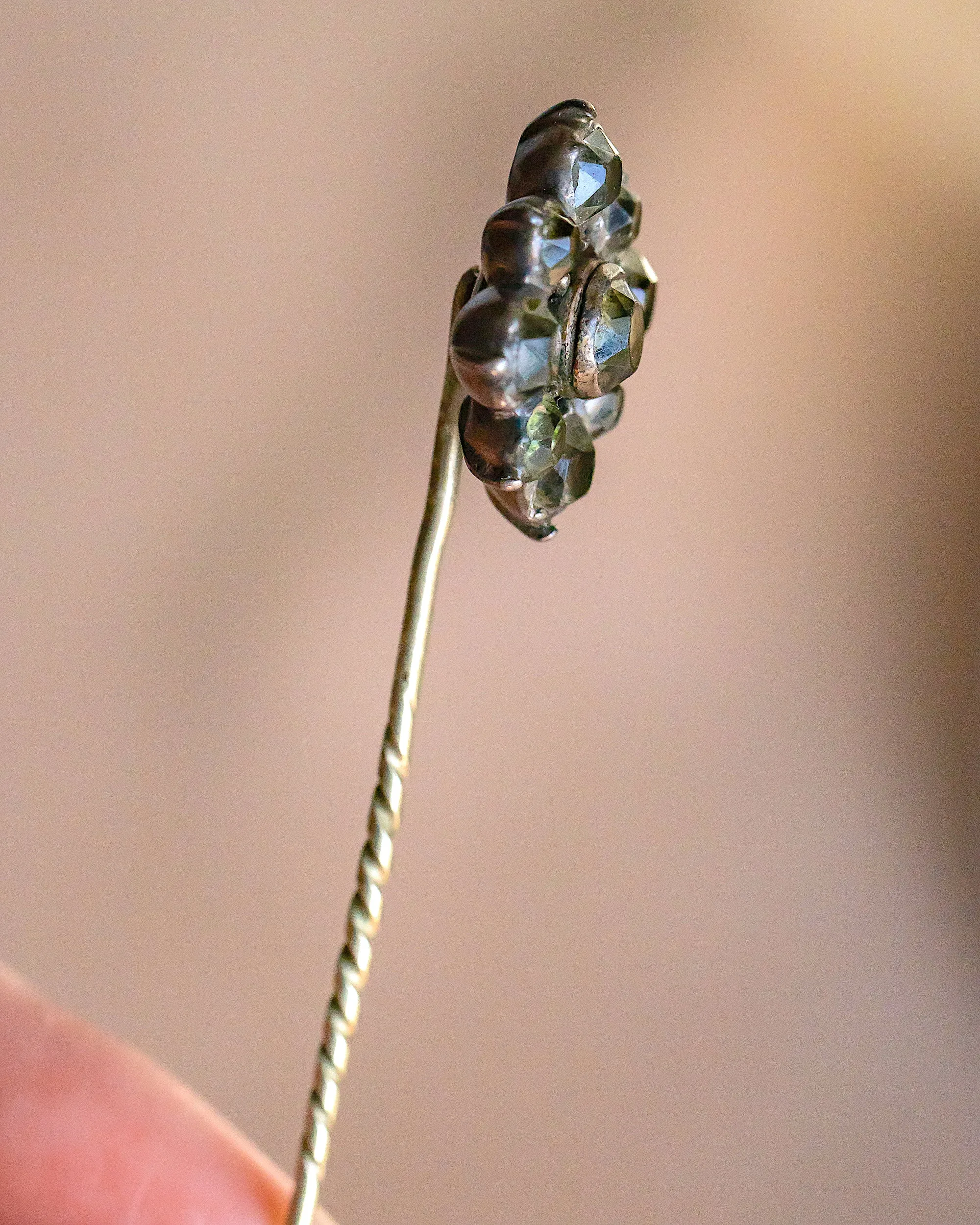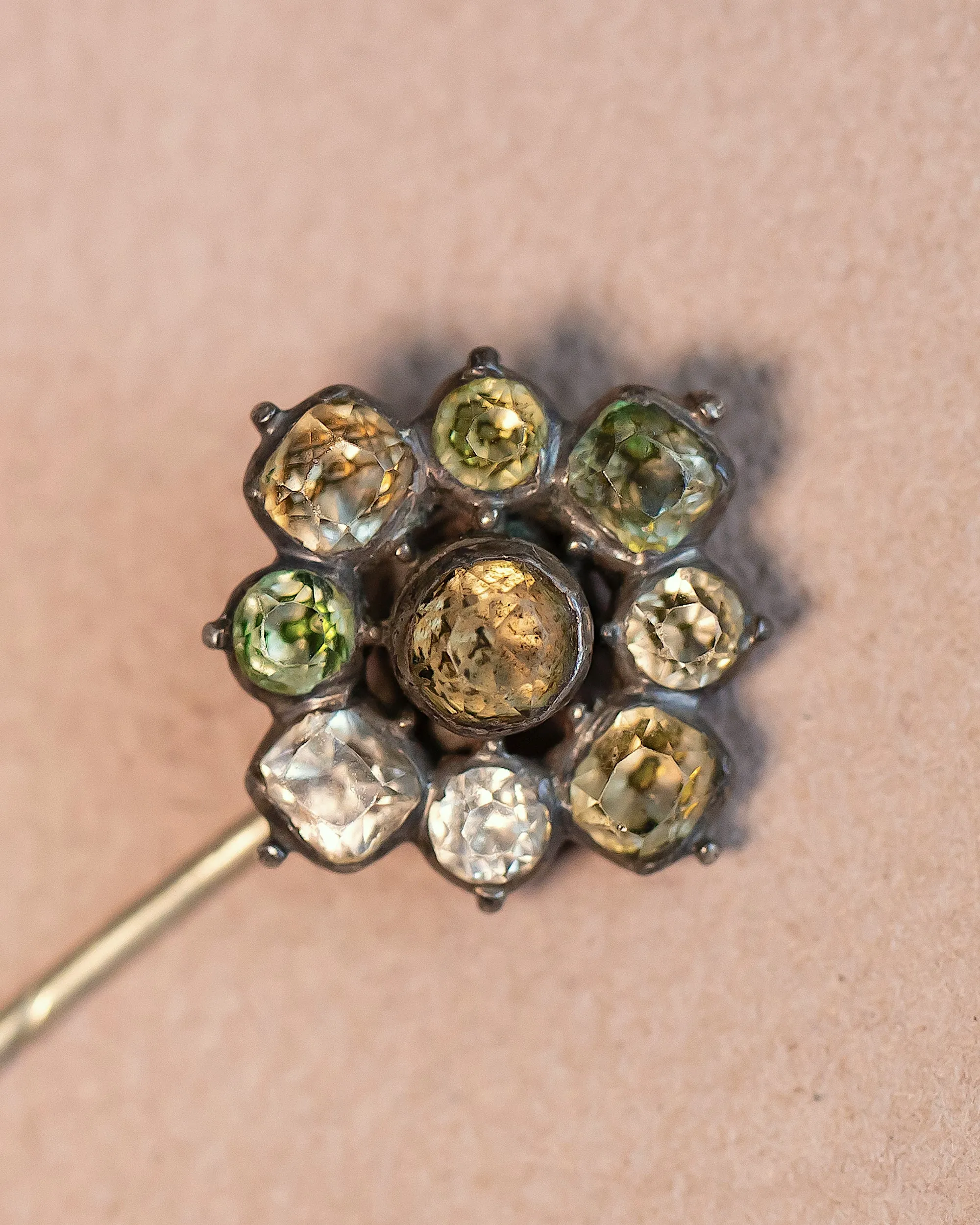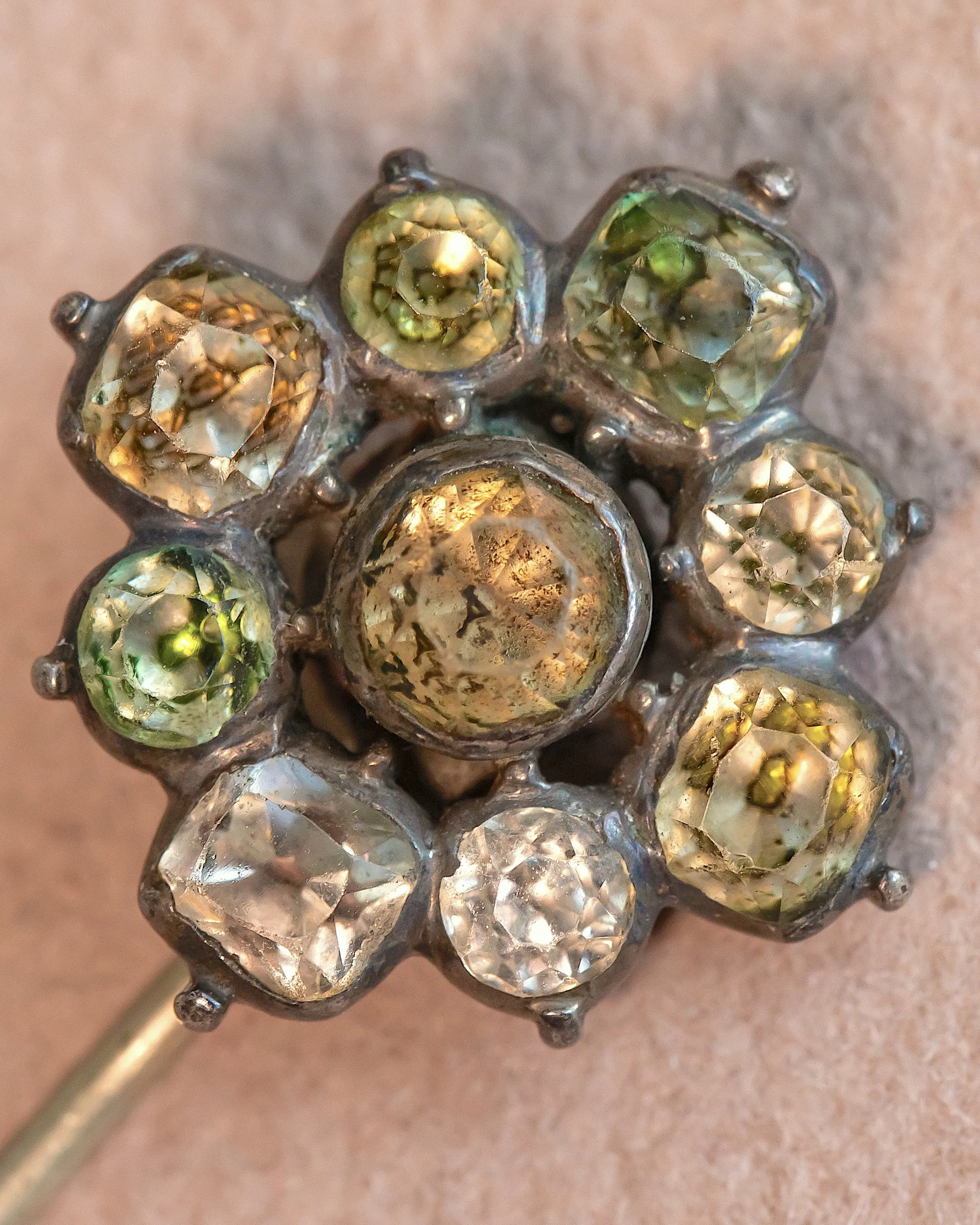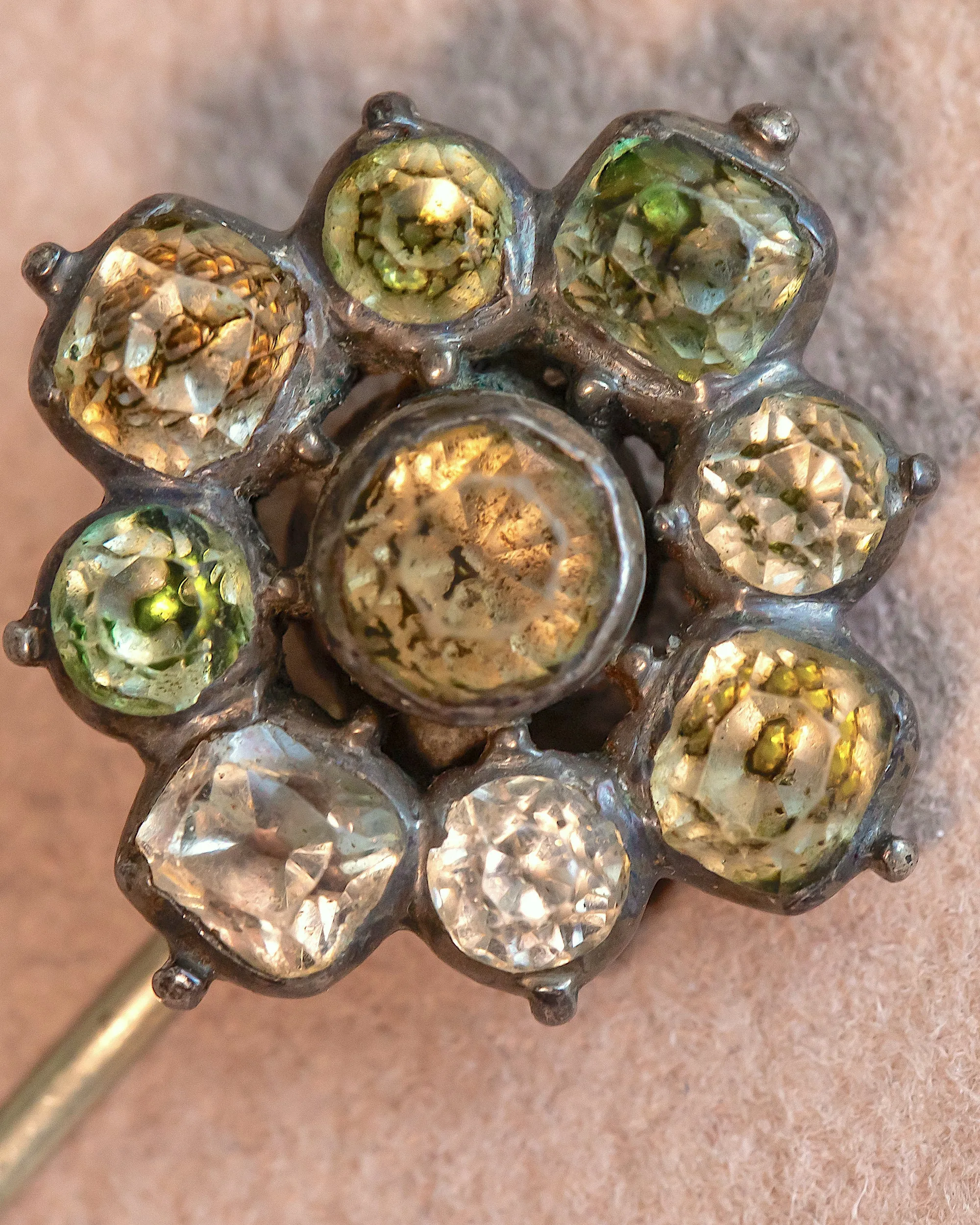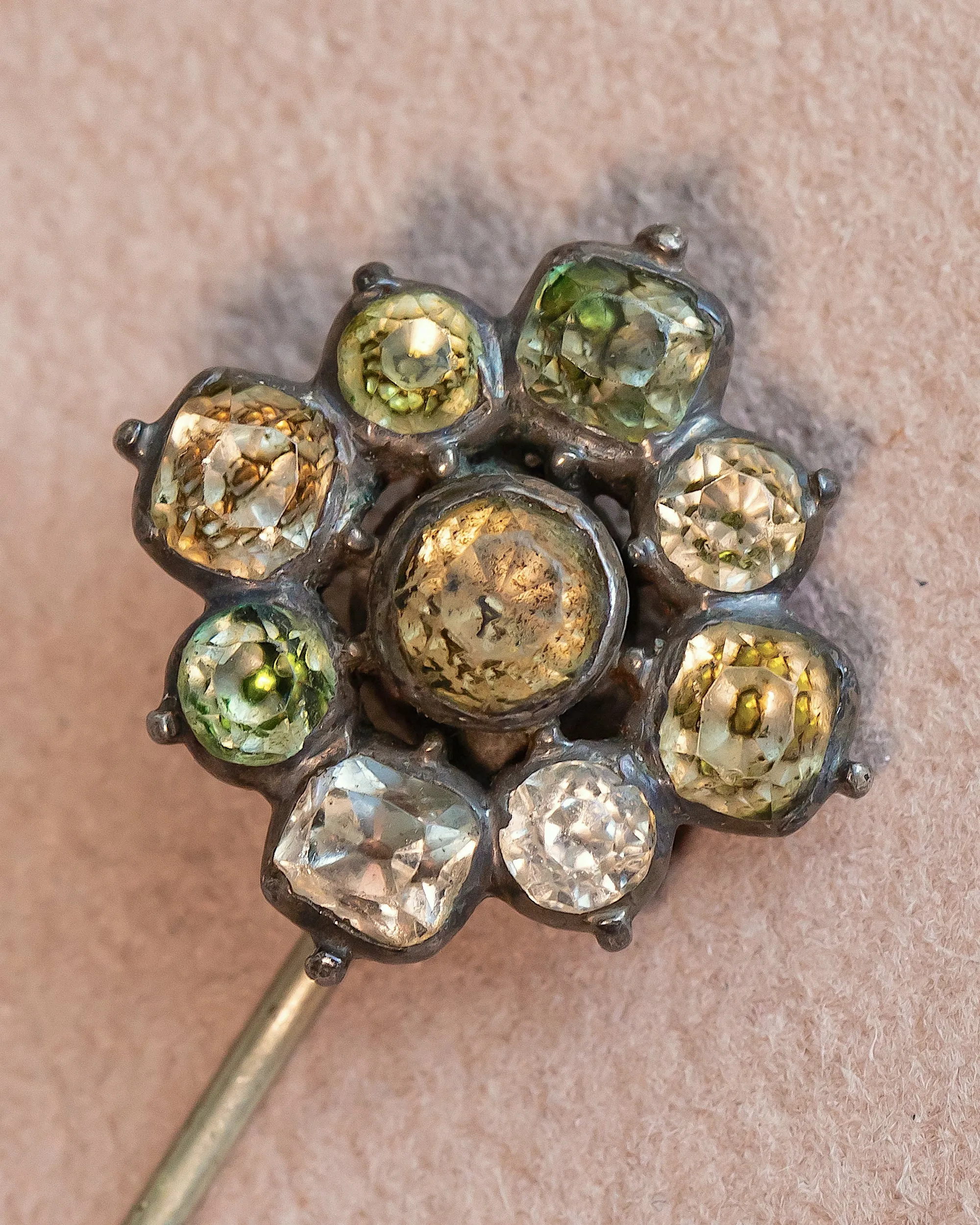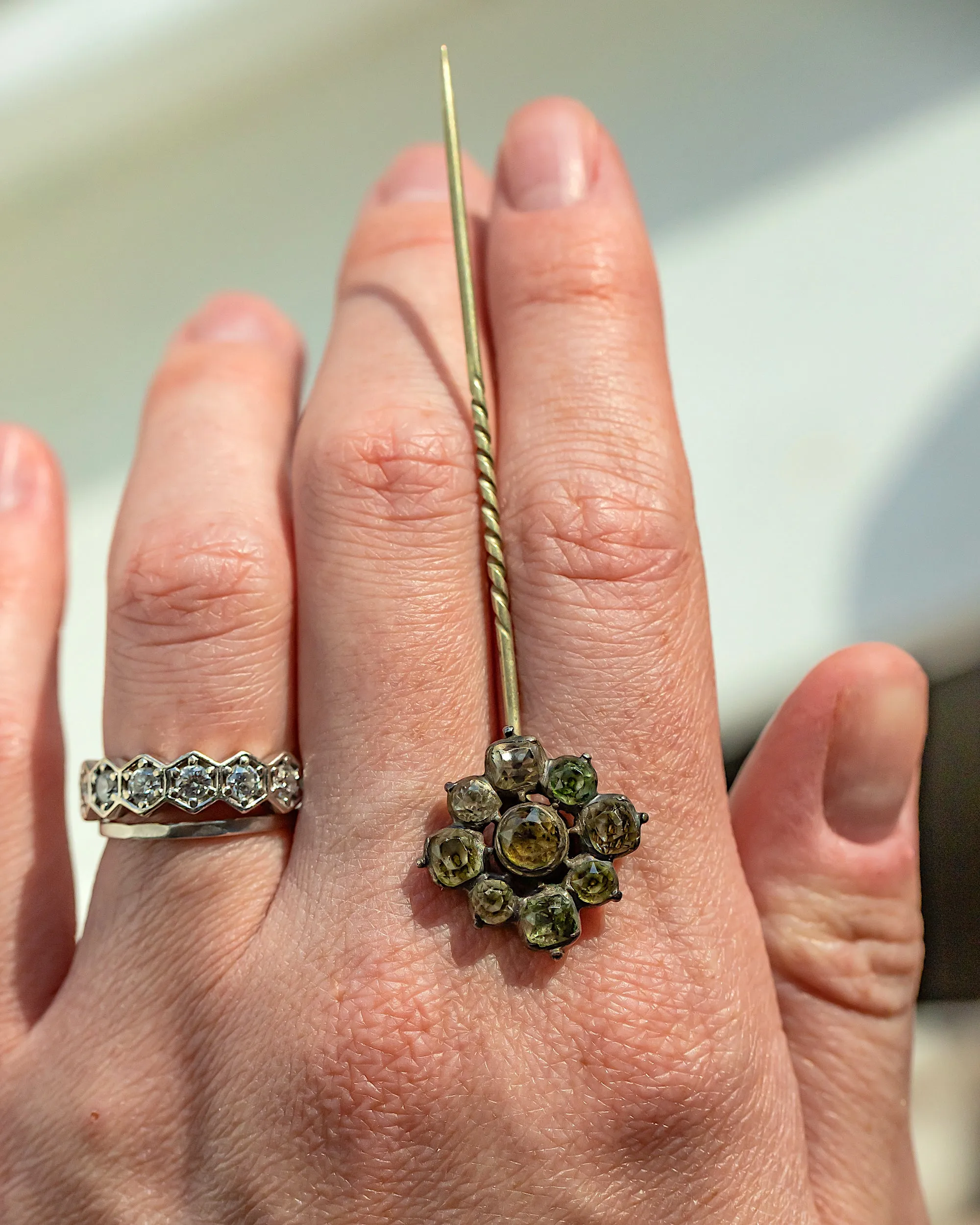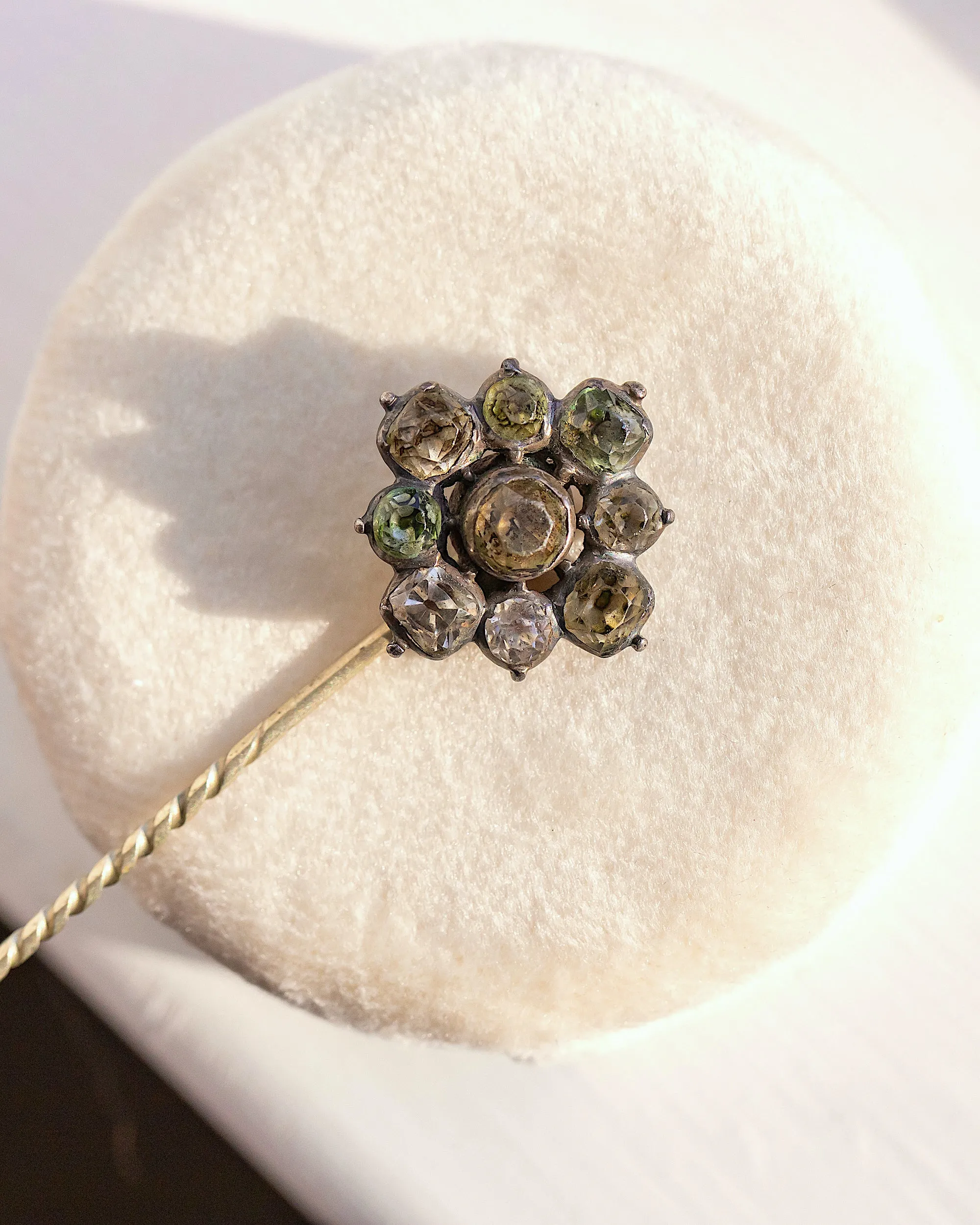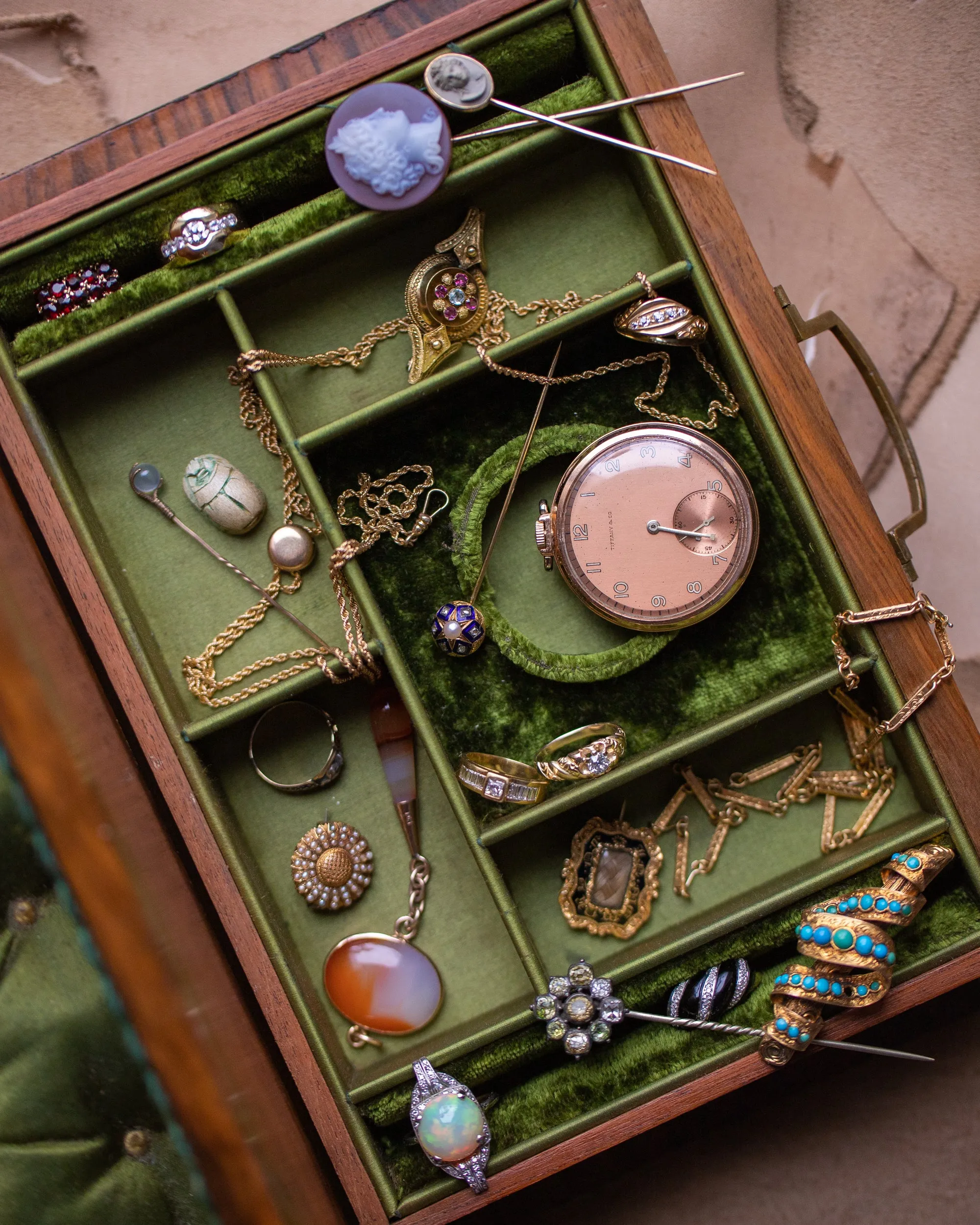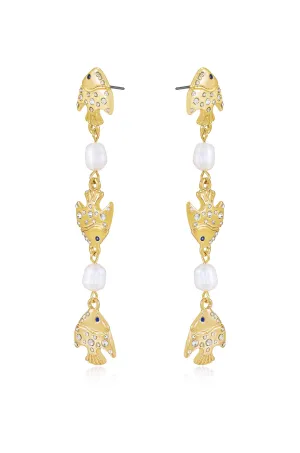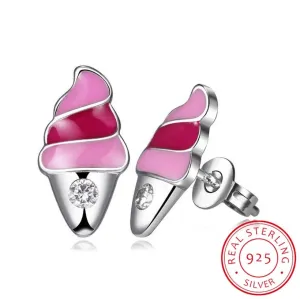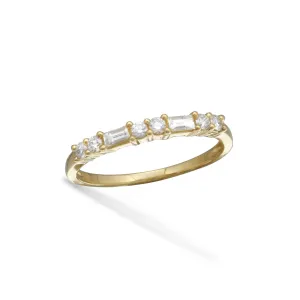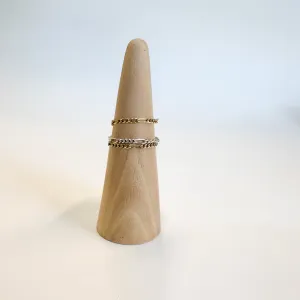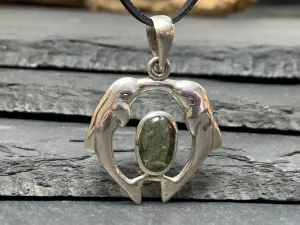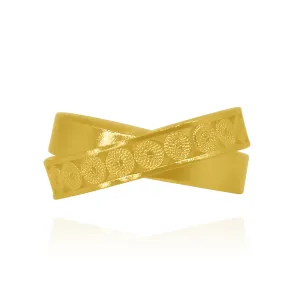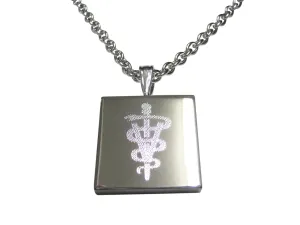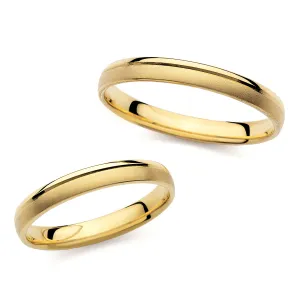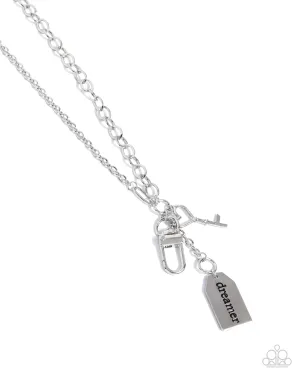General Information:
- Total Carat Weight: 2.71 ctw
- Precious Metal Weight: 3.33 dwt
- Precious Metal Material: This piece is believed to have a silver top & base metal stem; the silver may be a lower content, such as 800 or so.
- Dimensions: This pin measures 83.02 mm overall top to bottom; the gemstone head measures 20.51 mm north to south (length) x 20.40 mm east to west (width) x 8.90 mm back to front (depth) including the affixed stem to the pin's reverse.
- Weight: A desirably weighty 5.18 grams
- Markings: Unmarked, as is typical for pieces of this era
- Era: Research shows that this pin dates to between the 1760s and the 1770s.
- Buyer Notes: This pin is a rare example for its kind, as there are virtually no other comparables like it on the open market at the time of research and listing, making this piece an exceptional addition to any antique jewelry enthusiast's collection. The gemstones feature foil backing, a high-end treatment to gemstones during the 18th century, which require thoughtful handling today. Prospective buyers, please read "The Story" below for more information on the history and care of foil backed gemstones. Please note that the foiled settings show verdigris and time-earned wear, resulting in a speckled appearance, areas of demichroma, discoloration or a color-change effect. This piece is being sold exactly as-is, and each mark, trait, and element is proudly considered a reverently-prized badge of honor. While perfectly wearable as a lapel or collar embellishment, it is also a prime candidate for a conversion into a ring, pendant, charm, single earring, etc., by the buyer's trusted jeweler post-purchase. This pin does not come with a clutch.
Specifications:
- Center Stone Type: Crystal Quartz (Cut Rock Crystal; in this case, all eight of these cut crystal gems are designed to mimic the appearance of natural chrysoberyls, foiled to recall the earthy range of color that chrysoberyl stones exhibit)
- Center Stone Count: One (1)
- Center Stone Dimensions: 5.75 x 5.75 mm
- Center Stone Carat Weight: 0.51 ct by formula per the specific gravity of crystal quartz
- Center Stone Shape: Old Mine cut variant
- Center Stone Color and Clarity: The crystal quartz itself is colorless and translucent, but the chromatic foiled backing creates an optical effect of refractivity within a colored gemstone. This center stone is foiled to appear a golden-yellow honey color.
- Side Stone Type: Crystal Quartz (Cut Rock Crystal)
- Side Stone Count: Four (4)
- Side Stone Dimensions and Carat Weights:
- 4.45 x 5.00 mm = 0.34 ct (light green to pale chartreuse color)
- 4.65 x 5.10 mm = 0.36 ct (light golden-brown honey color)
- 4.20 x 4.70 mm = 0.30 ct (slightly duller champagne-gray gold color)
- 4.30 x 4.75 mm = 0.32 ct (whitish-clear with very slight gray-gold hue)
- Side Stone Shape: A crossover of an Old Mine Cushion to Peruzzi Cut
- Side Stone Color and Clarity: The crystal quartz itself is colorless and translucent, but the chromatic foiled backing creates an optical effect of refractivity within a colored gemstone. These elongated stones are foiled to appear the colors noted above.
- Side Stone Type: Crystal Quartz (Cut Rock Crystal)
- Side Stone Count: Four (4)
- Side Stone Dimensions and Carat Weights: 3.75 x 3.70 mm on average, for an estimated 0.22 ct each
- Side Stone Shape: Old Mine cut variant
- Side Stone Color and Clarity: The crystal quartz itself is colorless and translucent, but the chromatic foiled backing creates an optical effect of refractivity within a colored gemstone. These round cut stones are foiled to appear earthy yellow-brown, pale buttery-brown, whitish-clear with very slight gray-gold hue, and muddy greenish-brown.
The Story:
Romantically moody and beguiling in both tone and age, this antique stick pin hails from just shy of the mid Georgian years, dating to between 1760 and 1770. It is a wonderfully weighty piece for a stick pin, and the silver head is mounted with a sultry spread of eight crystal quartz gemstones, each one cut, faceted and polished by the hand of an artisan over 260 years ago.
Each crystal stone boasts the soaring height and steep slopes that are characteristic of historic gemstone cutting styles, particularly recalling Old Mine Cuts and their rare predecessor, the Peruzzi Cut. They are also each closed-backed with and set with colorful metallic foils complete with black dots for effect. Brilliantly designed, these foils cause in the stones a unique twinkle and flash, coloring them to appear as if they are chrysoberyl gemstones. Chrysoberyls were amongst the most coveted luxury goods of the era, and jewelers commonly crafted other stones, such as pastes and crystals, to be foiled in such a way as to impersonate the earthy, muddied green-gold chroma of natural chrysoberyls. This stick pin is one such jewel, a surviving-- and stylish--relic of 18th century high fashions.
Each stone is set in a cut-down crimped collet setting so that the silvery-metal setting carefully hugs the girdles of each stone so as to prevent exposing their delicate edges. This mounting style was common during the Georgian period, and indeed, continued to be used for featured settings in jewelry through the end of the 19th century prior to the proliferation of open prong mounting styles. This piece is created to embody an undulating, petaled motif, set on an axis so that it appears more floral than cross-like. In effect, the design is a geometricized version of an iconic giardinetti jewel, a term that is Italian for 'little garden(s)'.
Giardinetti brooches and rings were very popular during the Georgian and Victorian years, and were usually asymmetrical and sensuously Rococo, with voluptuous floral motifs that conveyed a sense of abundance and pleasure, fruitfulness and vitality. Yet, this pin's composition is less wild and restricted to a gridlike silhouette, still floral, yet demure. Its color and configuration indicate that it may be Portuguese in origin, though without knowing its precise provenance, this cannot be known for certain. Examples of floral cluster jewelry from this era, such as this pin, reflect these aesthetic philosophies, and all such extravagant pin accessories were worn and enjoyed by both men and women during the Georgian and Victorian years.
A note about foiled gemstones: During the Georgian period and prior, gemstones such as cut crystal, lead paste, and pearls oftentimes commanded HIGHER pricing than natural diamonds. It was common to set these precious stones in closed-back settings to enable the foiling process, a clever trick of the trade in which pieces of foil were carefully placed in the cupped setting beneath the gemstones of choice. The result of foiling stones was a hypnotic twinkle under historic lighting conditions, enabling the foiled refractivity to glimmer in low candlelight, as the foil reflected the flames in dazzling brilliance. These crystals also boast the black dot effect, wherein a black dot was painted onto the center of the each foil slip, which, when fully mounted as we see today, gives the crystals the impression of having the large, open culets which are characteristic of historic faceting styles.
One must keep in mind that the original owner for whom this cross was originally crafted did not occupy the kind of lifestyle or perform the same tasks we do today. This being the case, this foiled diamond relic was simply never intended or designed to withstand today's living. So, while this foiled jewelry is especially alluring attribute for collectors, they are quite vulnerable to water damage if even slightly wet. Water causes foil to discolor and darken, to somewhat dissolve, and it can get trapped between the stone and the setting. Thus, to prolong the life of secondhand jewelry, it should not be worn during physical activities and buyers should be mindful of condition notes and any presence of treatment-specific care.

